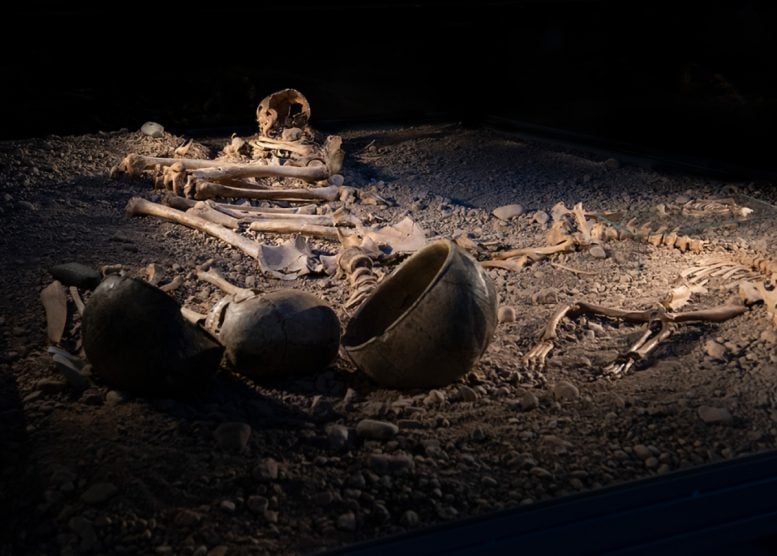Unveiling Deadly Stone Age Epidemics

An investigation uncovers that Scandinavian Stone Age communities were frequently plagued by bacterial ailments, including meningitis and food poisoning, due to their close living conditions and the absence of antibiotics. These findings reference Stone Age relics from Bergsgraven in Linköping. Credit belongs to the Östergötland Museum.
Bacterial contamination from food and water, but also from direct contact such as kissing, led to significant suffering during the Stone Age. Current research suggests that illnesses, which are easily treatable with antibiotics today, often resulted in death.
The idea of people living closely together without access to antibiotics may seem unthinkable, but this was a major part of our past. A recent study led by the Centre for Palaeogenetics in Stockholm delves into the microbial world of the Stone Age in Scandinavia.
The study describes various types of microbes, including those commonly found in healthy individuals as well as several that could have caused discomfort and other issues. These include Neisseria meningitidis, which often spreads via close human contact, Yersinia enterocolitica, commonly contracted from contaminated food and water, and Salmonella enterica, a customary cause of modern food poisoning.
“The Salmonella enterica case is a prime example of the potential hardships. In a burial from the Battle Axe culture at Bergsgraven in Linköping, we discovered two infected individuals. It's possible that we have identified their cause of death,” says Nora Bergfeldt from the Department of Zoology, Stockholm University, who focuses her research on bacterial diseases in ancient societies.
“These and other bacterial diseases that we have uncovered could easily be treated with modern antibiotics, but likely resulted in death during this era,” she adds.
The research analyzed microbial samples from 38 separate individuals, both from agricultural and hunter-gatherer societies. The study examined materials from Hummerviksholmen in southern Norway (9500 years old) to Bergsgraven in Linköping, Sweden (4500 years old). Since bacteria and certain viruses organize their genetic material in DNA similar to humans, scientists can discover this microbial DNA in human remnants.
The research team used this type of microbial DNA to identify bacterial diseases from the Scandinavian Stone Age. Particularly interesting is the transition period from a hunter-gatherer lifestyle to an agricultural one and the impact it may have had on prevalent bacterial diseases.
“Although we know when people in Scandinavia transitioned to farming, we don't have a clear picture of how this lifestyle shift affected general health,” says Helena Malmström at the Human Evolution Program, Uppsala University. Malmström's research primarily focuses on lifestyle alterations during the Stone Age.
“Increased human interaction led to more opportunities for infection. Although potentially impactful bacteria like Yersinia pestis are present, it's the infections spread via food that are most notable across the lifestyles in our research,” adds Anders Götherström, leader of the research project. “This research opens doors to explore aspects of prehistoric societies that were previously unattainable”.




